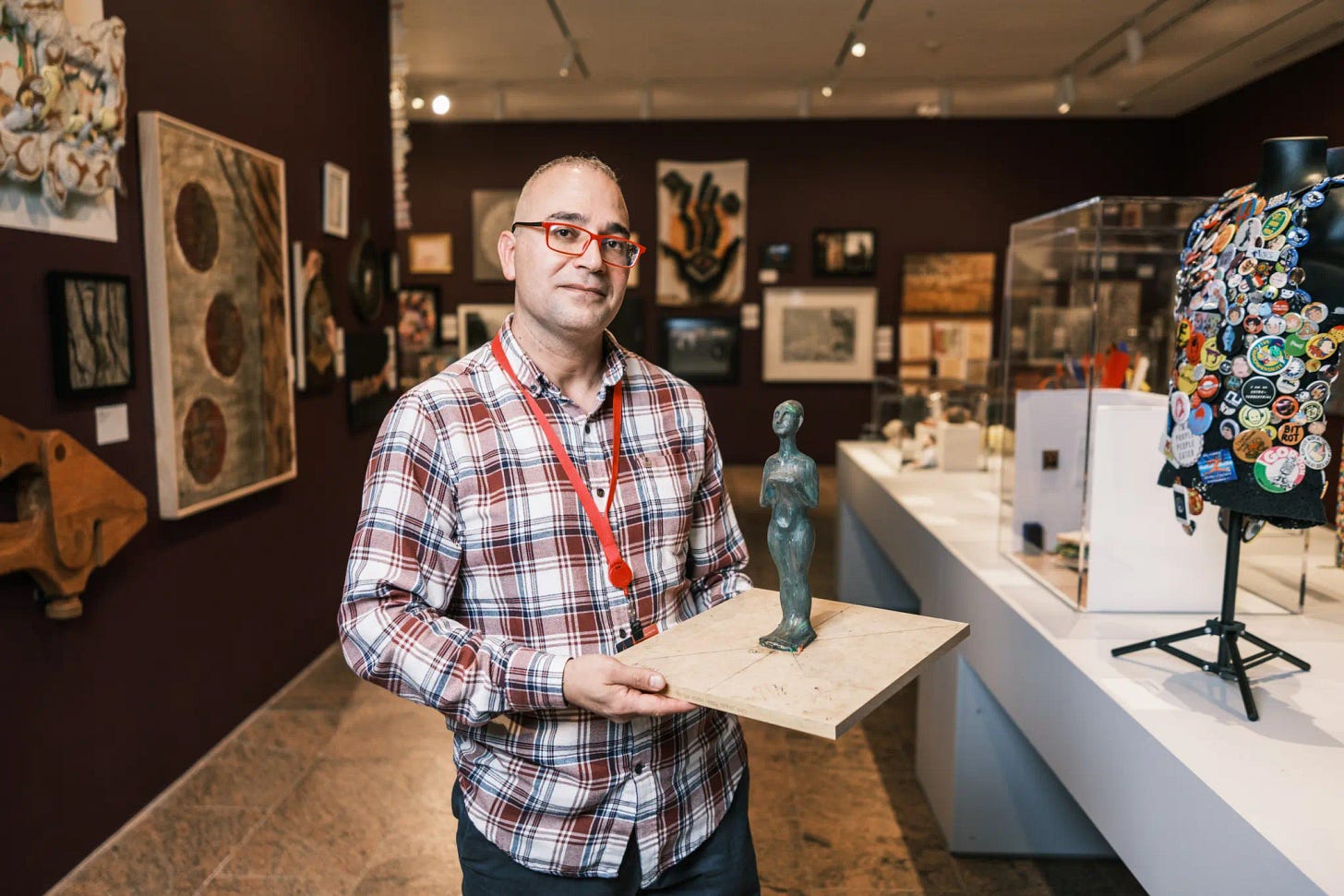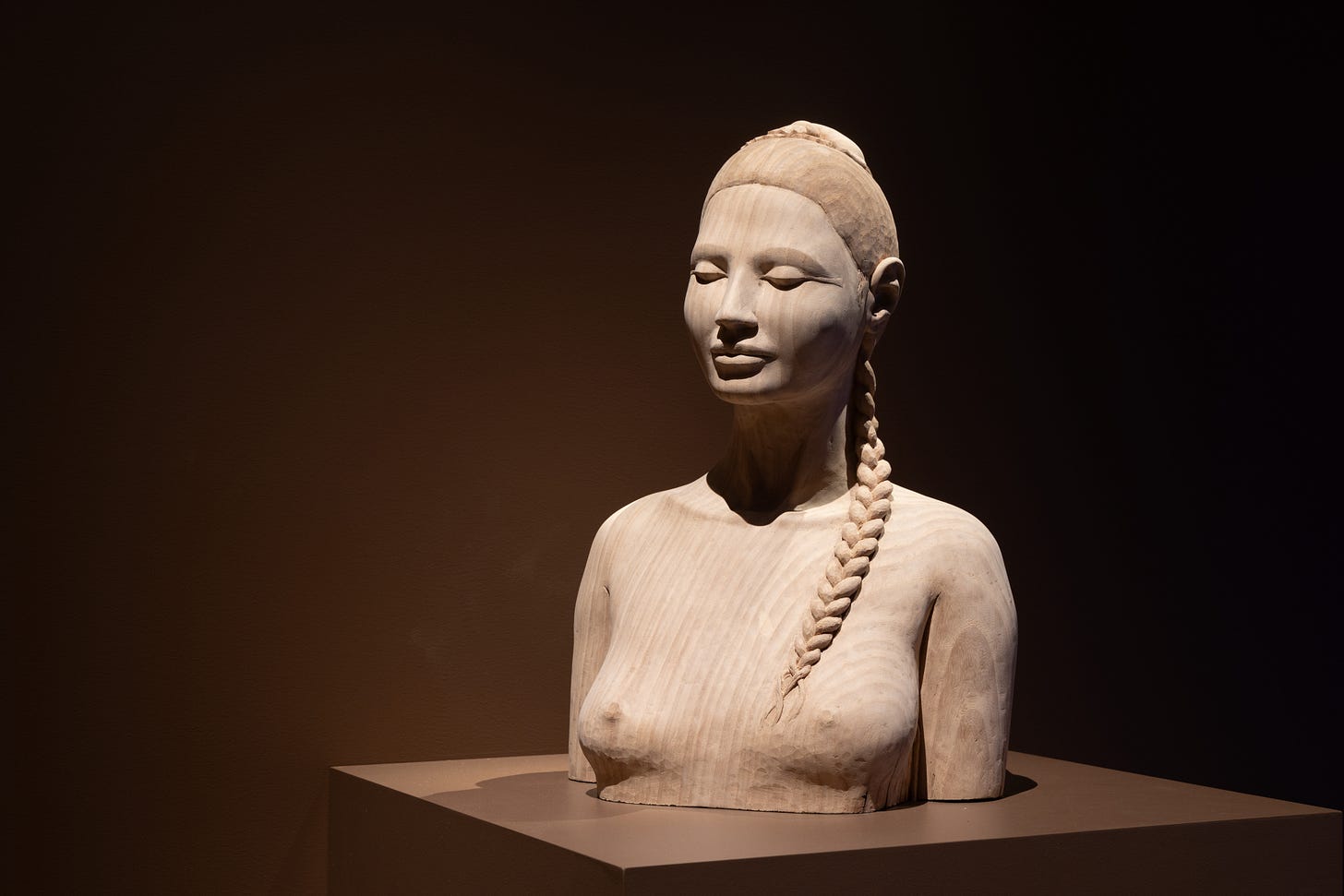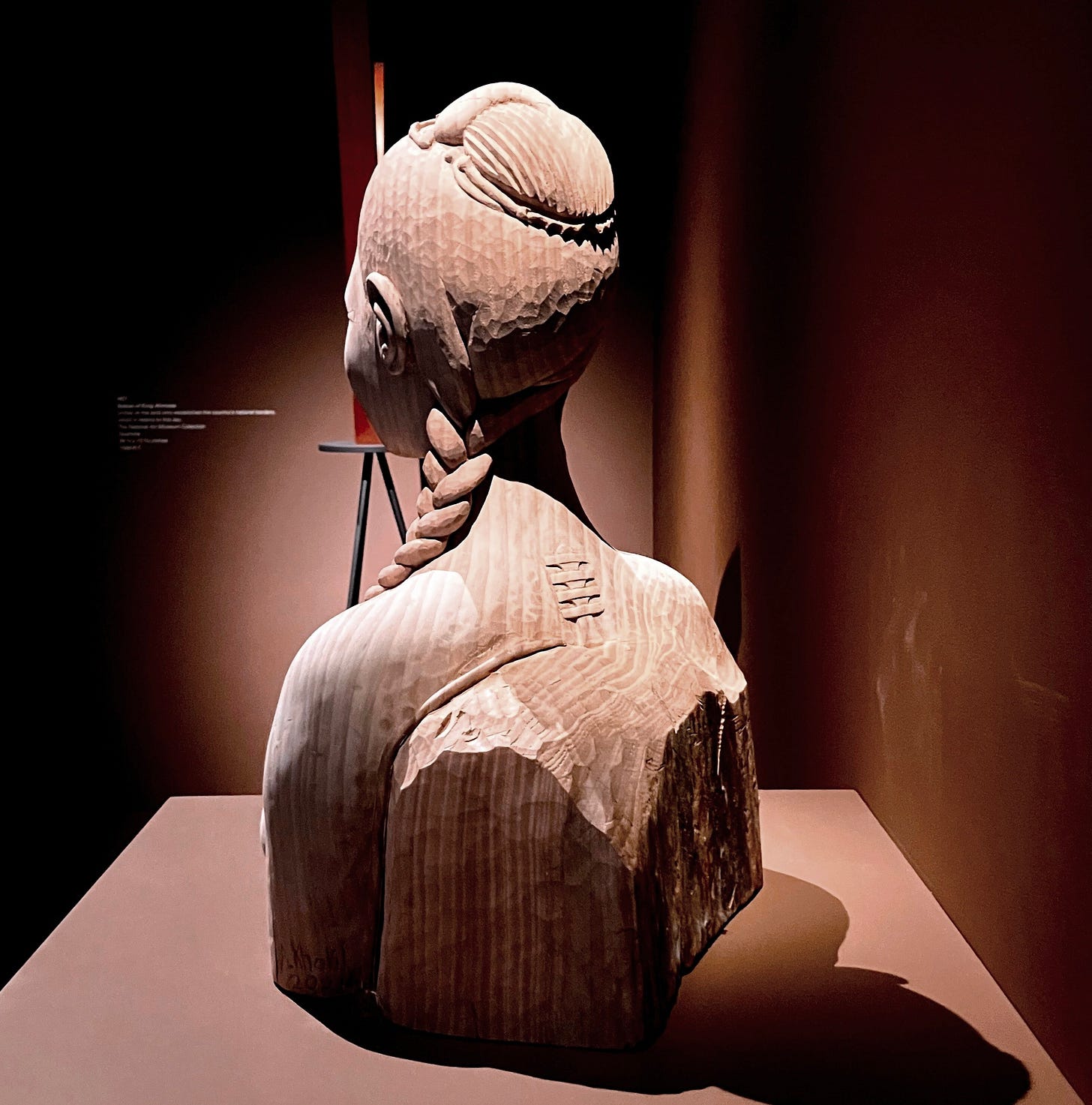The Met security guard with two sculptures on view at the museum
Armia Malak Khalil sculpts figures inspired by his native Egypt. He's one of 640 Met staffers featured in "Art Work," and has also crafted a wooden bust for another major show, "Flight Into Egypt."
Armia Malak Khalil is a security guard at the Metropolitan Museum. He’s also — like many of his colleagues — an artist.
Khalil grew up in Egypt surrounded by sculpture. “It’s everywhere,” he told me when I interviewed him for the New York Post for a story about the Met’s employee art show, “Art Work,” on view through Dec. 1. “I studied classical painting, but I taught myself sculpture copying the Ancient Egyptians.”

Khalil first came to the US in 2006. He had no family, no friends, no connections, but eventually found a community of Coptic Christians from Egypt living in Jersey City. “I started doing some wood carving for the church there,” he said. “The priest let me use a corner of the basement for my art.”
He began working as a security guard at the Met in 2009 and continued making sculptures inspired by his Egyptian heritage. He based the plasticine figurine in “Art Work” on the Ushabti — statuettes that were buried next to the deceased to help them in the afterlife.
“There were about 401 of them in each tomb, and I loved the idea of making my own with different materials,” said Khalil.
But Khalil has another sculpture on view at the Met — as part of the exhibit “Flight Into Egypt: Black Artists and Ancient Egypt, 1867-Now,” a monumental show that’s up till Feb. 17, 2025. For that exhibit, he created a majestic wooden bust of a young woman with a large scarab beetle crowning the top of her braided hair. I asked him some questions about it that didn’t make it into the New York Post piece.

Wearable Art: Tell me about your piece in “Flight Into Egypt.” Was it a commission? How did it happen?
Armia Khalil: I was just really lucky! I was working in the American Wing one day last August when I saw a visitor who looked like he needed help. So, I asked, “May I help you, sir?” And he said, “I’m looking for this painting, ‘Flight Into Egypt’ by [Henry Ossawa] Tanner.” It was like two galleries away, and it was my post actually that day, and I said, “Yeah, I know it. Let me show you.” And just on our way to the gallery — it’s like 15, 20 seconds — I told him, “By the way, I’m Egyptian and I’m an artist too.” I still remember his facial expression. He got his ID from his pocket and introduced himself. It turned out he was Akili Tommasino, a curator in modern contemporary art.
Wearable Art: Wow.
Armia Khalil: It was really wow! He told me about the plan for this big exhibit [about modern and contemporary artists’ take on Ancient Egypt], and I quickly showed him my Instagram and he asked, “Would you like to be part of the exhibit?”
The piece he initially wanted [a wooden sculpture of a woman with Cleopatra-like hair] was actually in France, so I wasn’t sure if I could get it. But I said I could make a new one. The whole conversation lasted a few minutes — four minutes, maybe — and that was it.
Wearable Art: Why did you call it “Hope”?
Armia Khalil: I was inspired by the the beetle scarab. For the ancient Egyptians, the beetle scarab represents resurrection and hope. The Egyptians would observe the beetle, every morning, coming out from mud, working and working, not giving up, repeating the same cycle every morning with their whole energy.
There is a [coffin] in the museum that I would see during my posts in the Egyptian wing that has the beetle scarab on the crown of the head, and I loved that idea, so I took that for my sculpture and put the beetle on her head.
Wearable Art: How long did it take you to complete this sculpture?
Armia Khalil: About six months, with my full-time job as a security officer here at the Met. I was very busy!
Wearable Art: Do you have a favorite post or gallery at the Met?
Armia Khalil: Gallery 800 is amazing, with all the Rodin. I love Rodin; he’s the best. Rodin and Caravaggio are my favorites. We don’t see a lot of that in Egypt so it was shocking to me to come face to face with them for the frsit time.
And of, course, the Egyptian galleries — my people. Of course, the art in these galleries is not new to me, but it is personal. It keeps me connected with my roots.
Wearable Art: How does it feel to see your artwork on display at the museum where you work?
Armia Khalil: So surreal. I'm a security officer. I walk around, just do my job, go around the galleys, sometimes I’ll make some sketches. But then there I was at the opening, and the curator is talking with visitors about the piece and then saying, “And here’s the artist!” My amazing security officer colleagues, they are so happy. They point to me and say: “That’s the artist!” It’s the first time one of us is in a major exhibit.
“Hope” is on view through Feb. 17, 2025. Khalil’s other piece, “Ushabti (A Substitute for the Afterlife”), is on view through Dec. 1 as part of “Art Work,” featuring pieces from 640 Met staffers representing every department of the museum (from security to conservation to masonry). I interviewed seven of these talented artists, including Khalil, for the New York Post. Check out the story here!





Such a nice man, I just heard his interview on the BBC World Sevice. He is an inspiration to never give up on following your dreams. An embodiment of hope!